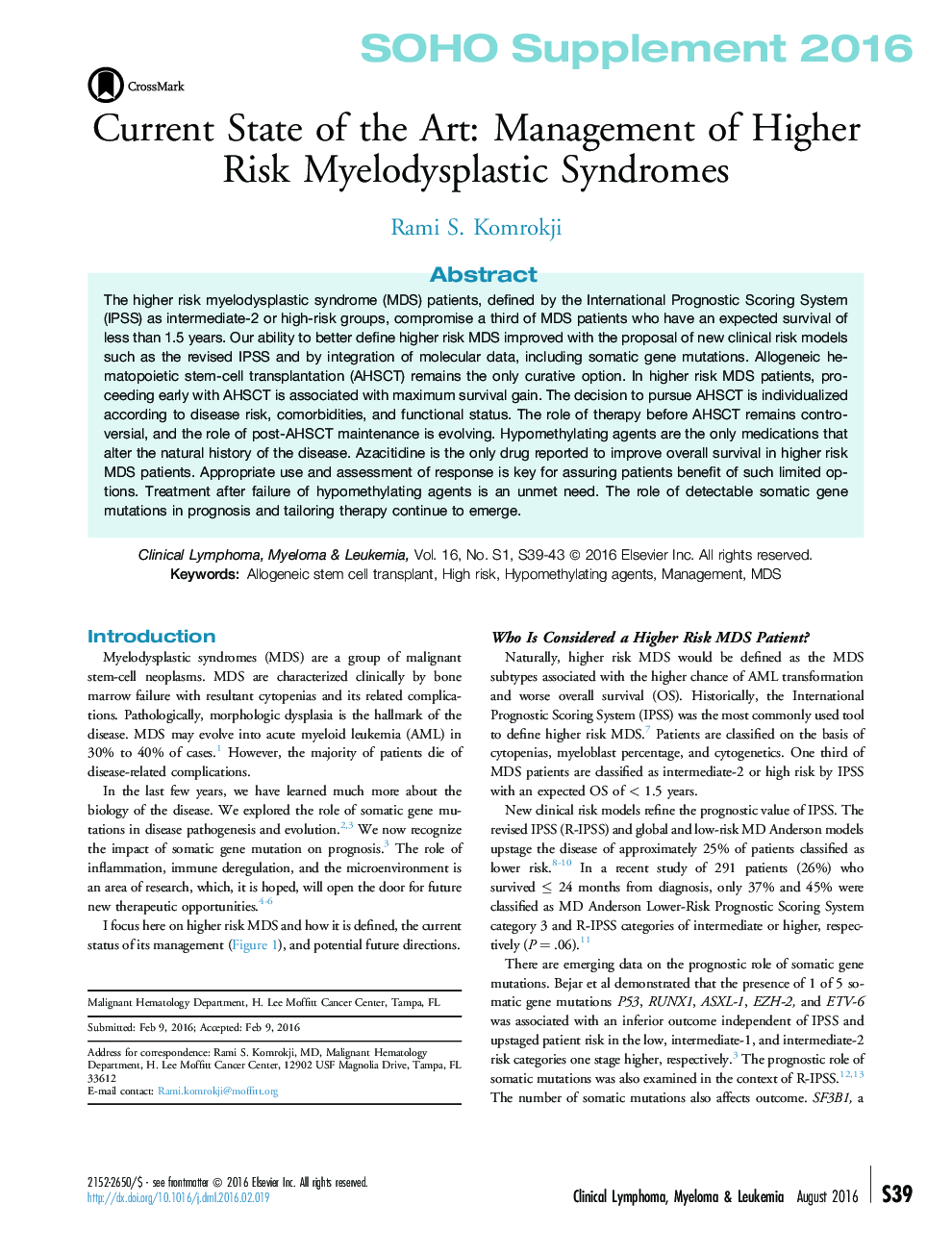| Article ID | Journal | Published Year | Pages | File Type |
|---|---|---|---|---|
| 2754401 | Clinical Lymphoma Myeloma and Leukemia | 2016 | 5 Pages |
The higher risk myelodysplastic syndrome (MDS) patients, defined by the International Prognostic Scoring System (IPSS) as intermediate-2 or high-risk groups, compromise a third of MDS patients who have an expected survival of less than 1.5 years. Our ability to better define higher risk MDS improved with the proposal of new clinical risk models such as the revised IPSS and by integration of molecular data, including somatic gene mutations. Allogeneic hematopoietic stem-cell transplantation (AHSCT) remains the only curative option. In higher risk MDS patients, proceeding early with AHSCT is associated with maximum survival gain. The decision to pursue AHSCT is individualized according to disease risk, comorbidities, and functional status. The role of therapy before AHSCT remains controversial, and the role of post-AHSCT maintenance is evolving. Hypomethylating agents are the only medications that alter the natural history of the disease. Azacitidine is the only drug reported to improve overall survival in higher risk MDS patients. Appropriate use and assessment of response is key for assuring patients benefit of such limited options. Treatment after failure of hypomethylating agents is an unmet need. The role of detectable somatic gene mutations in prognosis and tailoring therapy continue to emerge.
